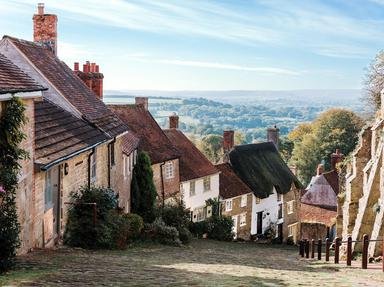Quiz Answer Key and Fun Facts
1. I was born when London still had food rationing and everywhere there were signs of the recently ended Second World War. There wasn't much by way of trees, grass or greenery in my part of North London so holidays to the Kentish seaside were a real treat and a wonderful and exciting escape to a new and unfamiliar world. Our first journey took us by steam train to a seaside resort which was world famous for its oysters.
Where did we go?
2. Whitstable today is served by modern, high speed trains connecting to London but before that there was a small but important branch line, starting off in Canterbury and ending at Whitstable harbour, which dated back to 1830 and the earliest days of the railways. This branch line was known as the 'Canterbury and Whitstable Railway'.
However, the locals had a better and more affectionate nickname for it - what was it?
3. My young sister and I used to enjoy the freedom of being able to roam about the countryside around our caravan site at the Kentish seaside. A favourite pastime of ours would be to lay on the grass in the warm sunshine and watch the jet planes leaving and returning to the large airfield nearby.
What was its name?
4. Sometimes, as a break from paddling on the muddy foreshore of Whitstable and nearby Seasalter where our caravan was parked, our parents would take us to Margate. We would picnic and paddle on the wide, firm sands and later be taken to enjoy all the fun of the fair at the large amusement park in the town.
What is this amusement park called?
5. My sister and I loved paddling and searching for crabs in rockpools and we happily played on any beach be it mud, pebbles or sand. But we preferred sand because we could build sandcastles and play ball. One of our favourite sandy beaches to visit was in the lovely old Dickensian town of Broadstairs with its white chalk cliffs and a sandy bay to picnic and play on.
What was the name of that sandy bay? Hint - 'Hengist and Horsa'.
6. My father enjoyed visiting quiet, out-of-the-way places and Reculver, situated along the coast near Herne Bay facing north, fitted the bill. The mysterious ruined twin towers of old St. Marys church, situated right at the sea's edge, stood high from the landscape and had served as a landmark for sailors for many years past. In the earliest days of the Roman occupation of Britain and long before the church was erected, the Romans had built a protective fort on a site adjacent to where the church now stands.
What name was this fort given?
7. One summer, because they couldn't decide which was the 'best' resort to stay at, my parents hired a caravan at a small inland village called Manston which was central to and made our three favourite sandy beaches of Margate, Ramsgate and Broadstairs easily accessible. These towns were sited on the Isle of Thanet which, although no longer an island, was once separated by the sea from the mainland of Kent by a shallow strait.
What was this strait called?
8. We would sometimes pay a visit to a famous old port town boasting a castle, a Roman lighthouse, extensive docks with ferry boats and a splendid view across to France.
What is this town called?
9. As we drove around the Kent countryside in our ancient, battered car my sister and I would see out of the windows the beautiful orchards of cherry and apple trees and the fields full of hops with their long, wooden poles supporting the tall bines.
All this food production led to the County of Kent being called _____ what?
10. If you stood on Whitstable beach looking out to sea which direction would you be facing?
Source: Author
NosliwYnot
This quiz was reviewed by FunTrivia editor
agony before going online.
Any errors found in FunTrivia content are routinely corrected through our feedback system.
